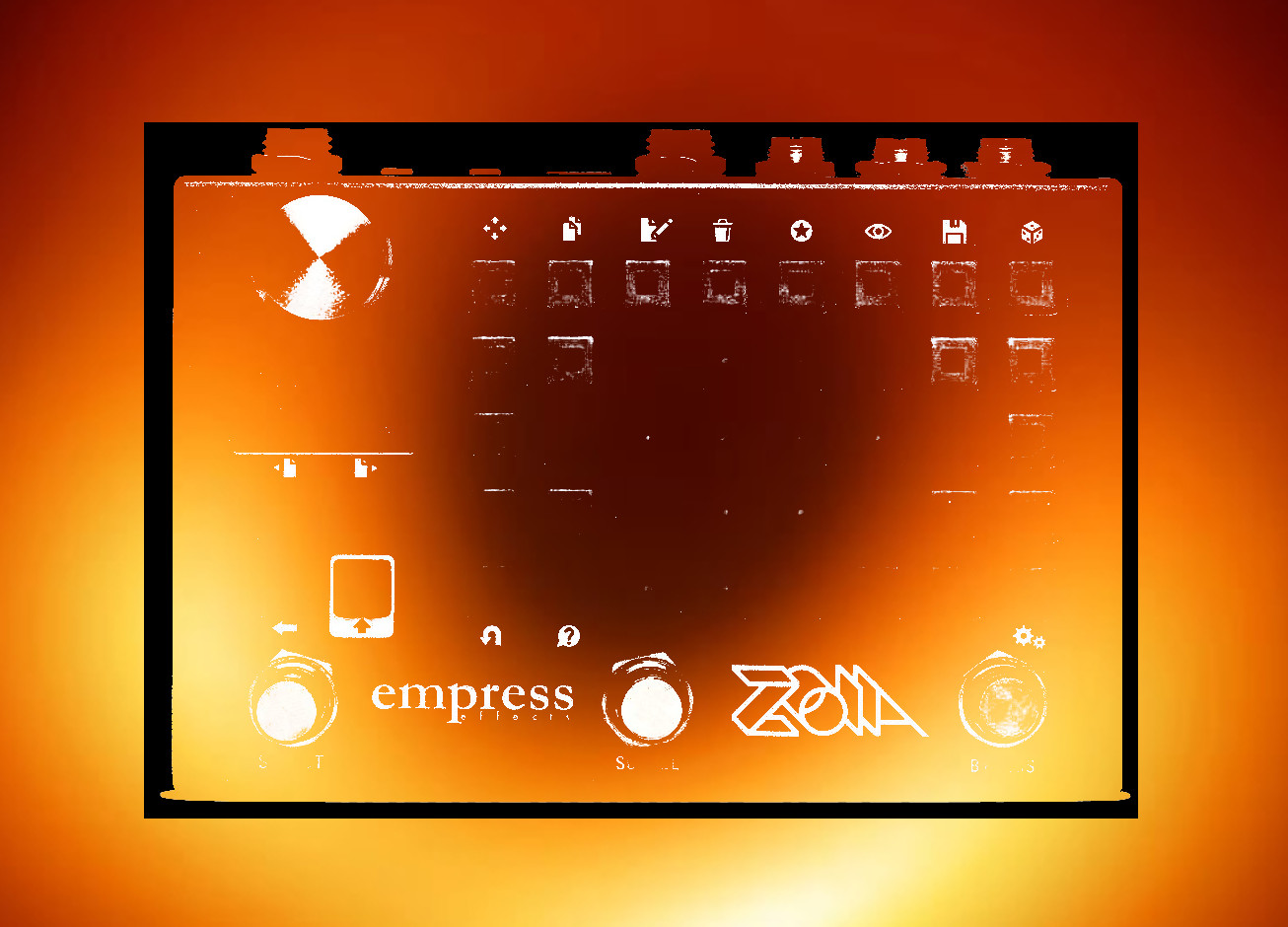I’ve been messing around with the idea of a barberpole flanger for… a long time. I can’t say this “nails” it, but it’s as close as I’ve gotten, with a lot of trying.
The barberpole, or Shepard tone, is based on an audio illusion, which gives the impression of a continually rising (or falling, or both) tone, much like a barberpole seems to continually climb. It’s a tricky, delicate thing, and it disappears rather easily when the rate goes too fast or the depth is too long. The default settings for this patch are about the best case I’ve found for making the illusion stick.
The patch likes hot signals–distortion will make it more pronounced (like a lot more pronounced). Because high feedback amounts and shallow comb filtering are kind of important, it’s pretty resonant and metallic by nature.
Controls:
Stompswitches:
Left stompswitch, momentary: Cycles through four different settings.
1. Rising tone in both channels.
2. Falling tone in both channels.
3. Rising and falling tone in both channels, in phase.
4. Rising and falling tone in both channels, inverted.
Middle stompswitch, latching: disables flangers 2 & 3, leaving only one flanger on each side. This can produce a wide stereo image as the Shepard tone travels from one side to another.
Front panel:
[Rate]…..[Feedback]……[Depth]
…..[Mix]………..[Delay time]……..
………………………………………………
[LFO1][Mode indicators][LFO2]
[LFO3][Mode indicators][LFO4]
Most of these controls are familiar, but a few quick notes:
Rate — veeeeeeeeeeery slow, almost crawling rates work best for the illusion to work. Like, above .15 or so, it gets very, very tenuous.
Feedback — feedback is bidirectional, with 0-1 being positive feedback and -1-0 being negative feedback.
Depth — shallow depths work better for the effect, ~.3. I didn’t demonstrate it, but you can get some _gnarly_ comb filtering by setting the depth and rate super low and the feedback super high.
Mix — mix
Delay time — Changing this will alter the tone/frequencies of the flanger. At higher settings, it enters chorus territory (and can cut into absolute depth–this patch uses stereo spreads because they scale more pleasantly than delay lines)
LFO 1, etc–pixels that show rate
Mode indicators–left and right channels, they switch up or down depending on whether that flanger is moving up or down. When using the middle stompswitch, the inactive flangers are dimmed and white lights show up to indicate the condition.
Sound clip:
0:00-1:32: So, I rarely use other effects to demonstrate patches, but distortion really helps make this one come alive. I begin with a clean signal, which sounds… like maybe there’s something resonant happening. Then, I use my Moog MF Drive to juice the signal. The mix is pretty high, too high, because I wanted to really show the flanger at work. I cycle through some of the different stompswitch settings.
1:32-2:00: I set it up as a chorus (which sounds great, if you ask me, and is part of why I left the controls unconstrained), beginning with LFO 2 & 3 disabled, it makes a really nice, wide, stereo sound. Turning 2 & 3 back on, it gets a bit vibe-ish.
2:00-4:03: It sounds great with a drum machine. Drum machines sound great with flangers. A big part of the reason I like this patch is for processing drums.


